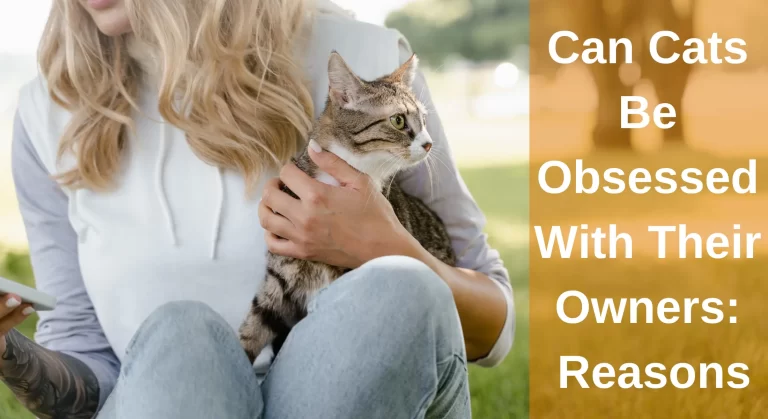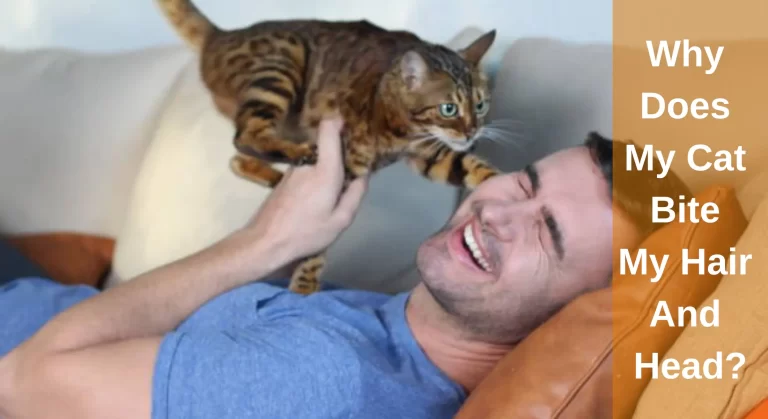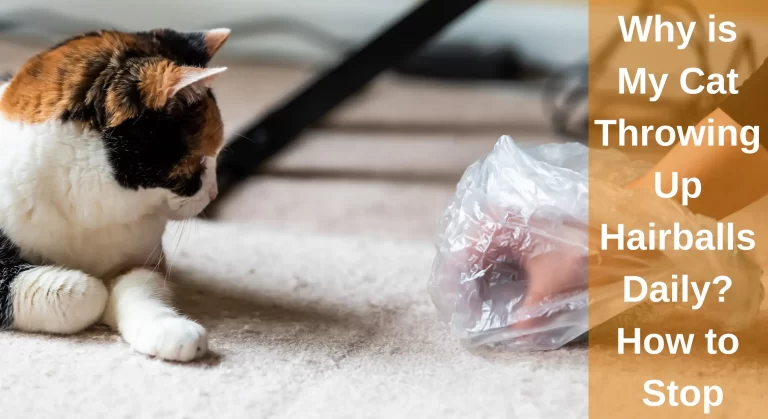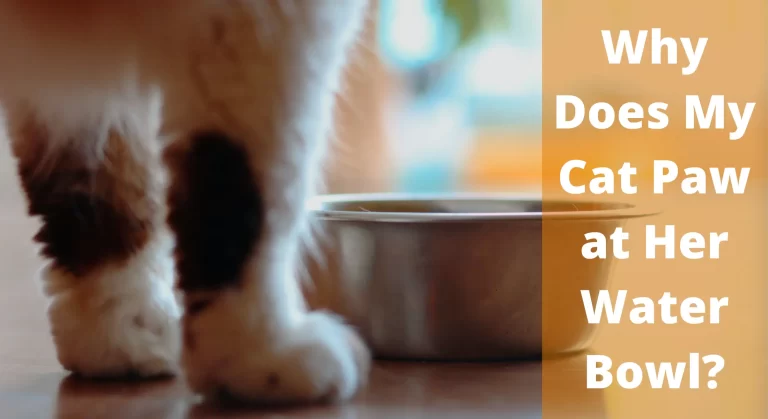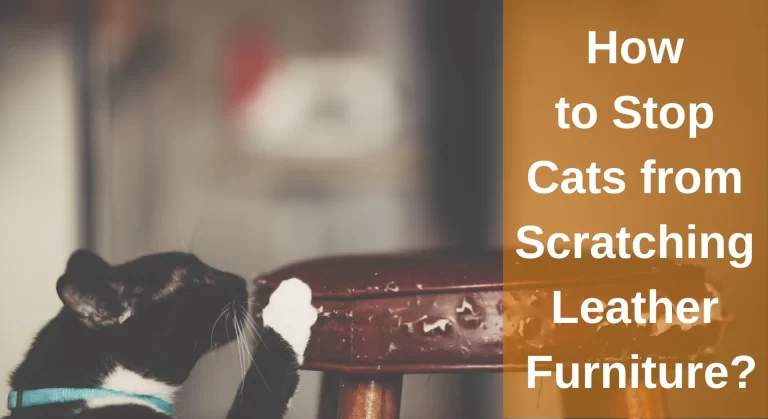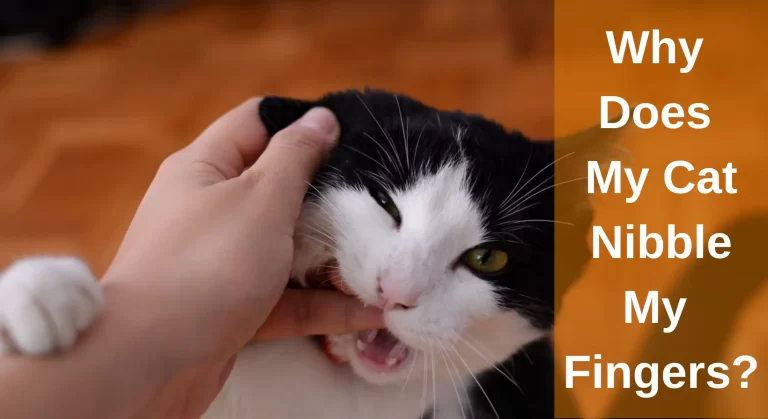Why Does My Cat Keep Moving Her Kittens? [Answered]
Does your feline companion have a batch of adorable and fluffy kittens? Congrats! Introducing new furry family members into your house may be a fun and rewarding experience. Yet it could also be a little alarming. Is the new mother moving from one space to another holding her bunch of babies? You may be thinking Why Does My Cat Keep Moving Her Kittens?
Mother cats move their kittens because the location might have suddenly grown uncomfortable for them or due to excessive noise, or other activities close to their resting area. Moreover, she also does this for providing her kittens warmth and protecting them from danger, find a more suitable location, teach them survival skills, and avoid unwanted attention. It’s also possible that the kitten is too ill to spend time with the other litter. She may also feel that her nest is too filthy and desire to shift her offspring to a more sanitary nest.
Even if you place the kittens back at the previous locations, she’ll again move them to tell you she doesn’t like it. So, being a cat lover, you might want to help kittens and understand the mother cat’s situation. That’s why, we’ve compiled every bit of detail that cat lovers want to know about momma cats transferring their kittens. Keep scrolling to learn how to stop this habit and much more!
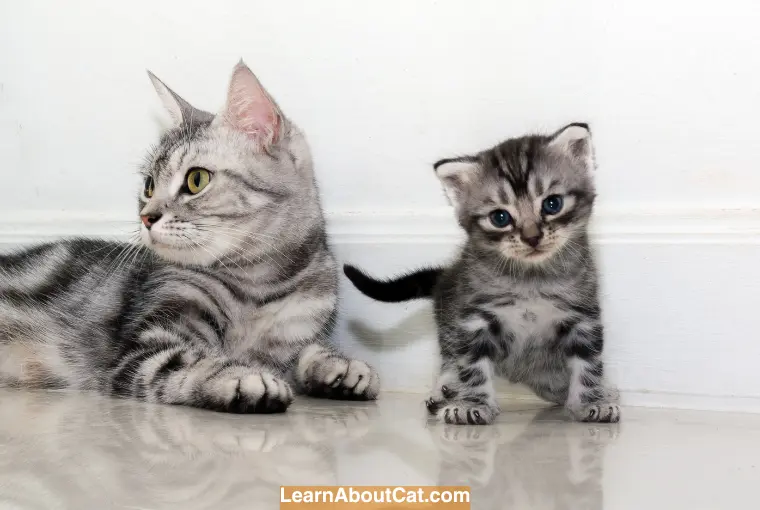
Is it Normal for Cats to Move Their Kittens?
Some new moms’ routines, particularly the reported “2-week migration,” sometimes seem confusing. You may relax knowing that this behavior is completely common for cats and hardly a reason for alarm.
At about two weeks old, the majority of mothers will start moving around their young. It’s important to note the period since most mothers didn’t move their kittens during the initial 14 days after birth. During the initial two weeks after birth, kittens are dependent on their mom. Kittens are born with closed sight and hearing, making them blind and deaf. Knowing this, a mom will nurture her kittens closely.
During the initial two weeks, if the mom is satisfied with her environment, she won’t shift her kittens. The kittens don’t begin to exhibit any awareness till after this. Kittens have the ability to see and understand properly by the age of fourteen days. As a result, the mother is a little more confident about transferring her young.
Also Read: Where Should Kittens Sleep at Night? – First Night
How Far Will A Mom Cat Move Her Kittens?
When it comes to handling their offspring, cats frequently struggle to reach the ideal balance. Generally, a mom cat may move her kittens up to a few meters away from the original nesting spot. On the other hand, if the mama cat feels that the kittens are in danger or if the environment is not safe, mom cats may move their kittens a longer distance.
Sometimes a cat will try to bring her kittens outdoors. Frequently, the babies will probably end up sitting in the exact area of your cat’s nest. First, look at these areas and other locations where your cat frequently goes.
Also, Check Out: My Kitten is Weak And Sleepy – How to Care for a Sick Kitten [A Guide]
Reasons Why Do Cats Move Their Kittens
If you don’t work as a cat breeder professionally, you might not have observed mama cats carrying their kittens’ behavior. Happily, there is no need to worry. Although, it’s a good idea to find out why the mama cat needs to relocate her young. Here are some potential reasons behind this behavior:

1. Defending Against Predators
As kittens are extremely small and immature, they are extremely susceptible to predators. In the environment, they may be in danger from predators including cats, birds, and other animals. If kittens aren’t carefully socialized, even house cats can be a danger to them. Mom cats may relocate their kittens to secure areas to defend them from attackers.
The cat reduces the likelihood that the smell of her kittens will entice predators by shifting them. The scent of newborn babies has been known to draw some predators. Shifting them to a new destination will thus assist reduce accidents.
2. Separating From Other Cats
To keep her kittens away from other felines is yet another purpose for why mama cat relocated them. Although adult felines could be pleasant and friendly with one another, they may also be dangerous to kittens, especially if they don’t know them well.
For instance, a mother cat may relocate her kittens to a different area if other mature cats are living in the home. Any possible aggressiveness or competitive behavior is avoided. The other cats could accidentally hurt the kittens by being harsh with them or pushing them down, irrespective of whether they’re violent or not.
A mama cat may relocate her kittens to keep them away from other felines to strengthen her relationship with them while also defending them from any harm.
Moving the kittens to a different area might facilitate the relationship that mother cats have a deep urge to look for and nourish. In order to defend and take care of her kittens, a mama cat will instinctively shift her kittens away from other felines.
3. Teaching Surviving Knowledge
A mama cat’s crucial job as a teacher of how to live in the wilderness besides safeguarding and nurturing her offspring. This involves imparting to children crucial abilities including social graces, cleanliness, and hunting.
A mother cat may relocate her kittens to give the young one’s chance to pick up and develop these abilities. For instance, a mama cat may relocate her kittens to a location with more prey species so they can practice hunting and develop their skills.
To give their babies a chance to practice jumping, running, and roaming, mama cats may also shift them to a location with varying climates or hazards. The kittens benefit from this as they grow physically and learn self-assurance in their environment.
Mother cats also provide critical emotional intelligence to their offspring, including dominance and communication. A mama cat may expose her kittens to various social circumstances and aid in the development of these abilities by relocating them to various areas.
4. Seeking Quiet and Comfortable
You may be showering your cat with excessive unwelcome attention when you’re thrilled with all your joy on the new babies. While you may wish to love the kittens and lovingly stroke their adorable tiny faces, your mother would like you to perform the opposite thing.
Your cat will shift her young to a more peaceful area if she thinks they could be disturbed. Even while it’s totally acceptable to meet your cats, make sure to respect their privacy.
The kittens will probably be relocated if a cat and her babies are living in an excessively bright location. All cats prefer dim lighting because they can see properly there, but kittens are especially sensitive.
Another issue is noise. Avoid placing the cat and babies near a radio or TV. The kittens may become disturbed if they’re closer to noisy neighbors or windows which allow excessive noise.
5. Kittens are Mature Enough
Your cat’s decision to relocate was also influenced by the simple fact that her kittens had outgrown their previous space. Mama will shift the babies to a bigger space if they were in a nice small nest for improved comfort.
Moms of wild cats will take their kittens to where they like to prey to train them how to prey. Your cat could be attempting to achieve this by bringing her young closer to the feeding bowl.
6. She’s Still Giving Birth
Your cat might be still in labor if she continues to wail after giving the first three kittens. Did you understand that cats give birth in three phases? Your pet can be roaming to seek a comfy place or a shelter for her new litter.
Your cat might scream more during this period since any mother will confirm, having a baby is extremely painful. This phase might last a maximum of 24 hours.
Interesting Reading: Can A Cat Get Pregnant While Nursing?
7. Providing a Clean Environment
The mama cat may dislike the way her environment feels and appear after having a baby in one place. You’ll notice that your cat instinctively moves the kittens to a clean spot over and over again. For instance, a mother kitty should not leave her young in a moldy, musty cellar or deserted building.
Even ordinary scents that weren’t alarming before the delivery could be alarming after the arrival of the babies. The mama cat will continue looking for new hiding spots for her kittens unless she’s happy with the conditions of cleanliness.
8. A Warmer Environment
While delivering kittens around the holidays might appear to be the ideal scenario, the young mum may not enjoy the cold and how it affects her offspring. The cat will transfer her babies to a more pleasant location far away from vents, hard floors, and open gateways if the home isn’t really warm.
Start by making sure your home is cozy in the winter if you’d like to learn how to discourage cats from transferring their kittens. This approach will provide her babies with plenty of warm areas to grow.
9. Maternal Violence
No issue how safe or spotless the cat’s surroundings are, maternal hostility will undoubtedly appear sooner or later. A normally sociable cat can become violent due to hormonal changes after childbirth. They’ll attack if anybody or another cat tries to attack.
No wonder what their intentions are, mama cats typically hiss angrily if anybody plays with the tiny babies. Even far off from your family, cats will continue moving if they feel unsafe unless they discover an appropriate low-traffic area. The main objective is to carry out her care responsibilities without continually having to use aggression.
Moreover, among the various health illnesses that may impact maternal cats and lead to stress, confusion, and odd behaviors is mastitis.
Check Out: Why Do Mother Cats Hate Their Kittens?
10. The Kitten Seems to Have a Medical Condition
The most frequent cause for a mama cat to separate just one kitten from the rest is a medical issue or pregnancy abnormality that renders the kitten non-viable.
Since raising a group of kittens is so demanding on a mama cat, if a kitten isn’t likely to survive, the mama cat will decide to separate it from other nests. Rarely (it’s not very common), the mother might even eat the kitten itself (cannibalize it).
A mama cat may remove the poorest kitten from the batch and concentrate all of her energy on the stronger kittens if she believes there to be a dearth of nutrition or supplies.
Find Out: Kitten Sleeping All Day After Vaccination – Is It Normal?
How Do I Stop My Mama Cat From Moving Kittens?
You might be hesitant to appreciate the behavior, even though it might be normal for a mother to transfer her babies. It’s unlikely that you can entirely halt this. It is not advised to even attempt. Yet you can lessen the disturbance.
Parenting a group of kittens requires understanding what you should do if your cat continues relocating her young. Do the necessary preparations to assure the pleasure of the mother and her children. To do this, follow these guidelines:
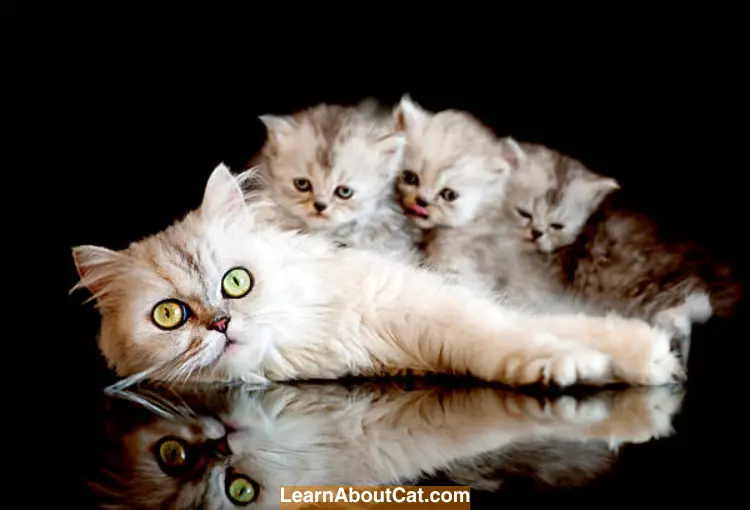
1. Don’t Handle Kittens
Do your best to prevent holding kittens during the initial two weeks after their birth, until it’s essential. As newborns are so helpless at this stage, your cat will go to all lengths to safeguard them.
To begin with, you might unintentionally harm the kittens. If you’re not, the cats are probably terrified of you. They can’t see you, listen to you, or smell you. Touching separates them from both meal and heat supply.
You must realize that your cat might not have faith in your motives either. A cat only considers safeguarding her kittens. Regardless of how you serve her, it doesn’t matter. She might think that you have bad intentions. She will therefore attack and claw to discourage approach.
Your fragrance will become more potent the greater you touch kittens during this crucial early stage of growth. Your cat will feel the need to hide her young as this odor won’t go undetected by her. Don’t convey this perception.
Also, Find Out: Why Do Mother Cats Attack Their Older Kittens?
2. Make the Area Tidy, Cozy, and Peaceful
Your cat will strive to make her kittens tidy, peaceful, and quiet, as was already described. A delicate balance must be struck in this situation. If you wash too much, the mother cat will view you as an intruder in their space. But if you neglect it, the cat will leave her territory.
Waiting till your cat moves her babies is the best course of action. Discard anything unwanted, like dirtying, whilst the area is empty. Change one previously utilized comforter for another because cats and babies both will still crave comforting smells.
Use a wall-mounted thermometer. Check for signs of movement if the temperature routinely falls under 80 degrees near your cat and kitten nesting. If so, find a secure way to add some extra heat, like using comforters or warmers.
3. Observe the Mum’s and the Babies’ Condition
Conduct a regular check on your cat’s appearance, behavior, and emotions. Cats are more likely to stay close if they are in good health. You’ll be aware of how your cat typically acts and be able to tell when something’s wrong. She just gave birth, so there might be a little weirdness, but nothing unusual or ordinary.
Observe the kittens. At about 3 weeks old, they should be brought to the veterinarian for an examination. Watch carefully for any early indications of health issues before that. Healthy cats will fulfill the below characteristic:
- Optimal weight. A reduced-weight kitten is one whose ribs are visible.
- Clear eyes with no discharge
- Gentle, non-streaming, non-crusty, and non-dry nose
- Tidy ears
- Not scratching at the lips or feeling nauseous
- A healthy coat without bald spots or blemishes
Your kittens may begin to become more lively, inquisitive, and talkative. If the kittens are silent, reclusive, and avoiding interaction, there might be an issue. It’s common for cats to move their young. There isn’t anything to worry about even if she shifts the whole litter and keeps taking care of their requirements.
Find Out More: Do Cats Inbreed? Things Cat Owners Should Know
4. Offer Sufficient Resources
Ensure that the mother cat and her babies have availability to a litter tray, meal, and drink in their new home. Also, it’s critical to give them a cozy place to slumber.
Check Out: The Ultimate Guide to – How Much to Feed a Kitten? Ketten Feeding 101
5. Make Sure the Nest Space is as Silent as You Can
Consider possible places for your cat’s home as early as you become aware that she is carrying kittens. Most cats will pick an area that is calm, dimly lit, and not overly crowded. Even though your cat will make a home for herself, this may not be the best place. Try to convince your cat to make her home somewhere which satisfies her requirements and enables you to keep an eye on her as well as her young from a distant.
Keep the space as calm and peaceful as you can when your cat has opted to construct her home in an unsuitable place. Be sure that no other animals are allowed near her nest. Even better, construct a cage or put her nesting in a big box. To increase the area’s heat and isolation, wrap it with covers.
Why the Mom Cat Doesn’t Like her Kitty Place?
A cat has unique ideas about where its young should live. Most cats favor a calm, secure environment. She will therefore be abandoned there along with her kittens.
It is important to understand that newborns are totally reliant on their moms and that cats carry this duty with great importance. It’s likely that your “Cat” will look for a more remote location if she delivers the baby in an area with a lot of disturbance, flashing lights, or other activities.
Even though the cat and you “agreed” on the birthplace at first, it can change afterward. Usual places to look include closets or cabinets, behind or beneath mattresses, sofas, and chairs.
How Does a Cat Move Their Kittens?
Several entertaining movies of cats holding kittens have probably been shown to you. Our cat may find it challenging to move a nest of kittens. Moreover, they have established a lot of various techniques to ease the process.
The number of strategies mom cats can use to shift their babies is provided below.
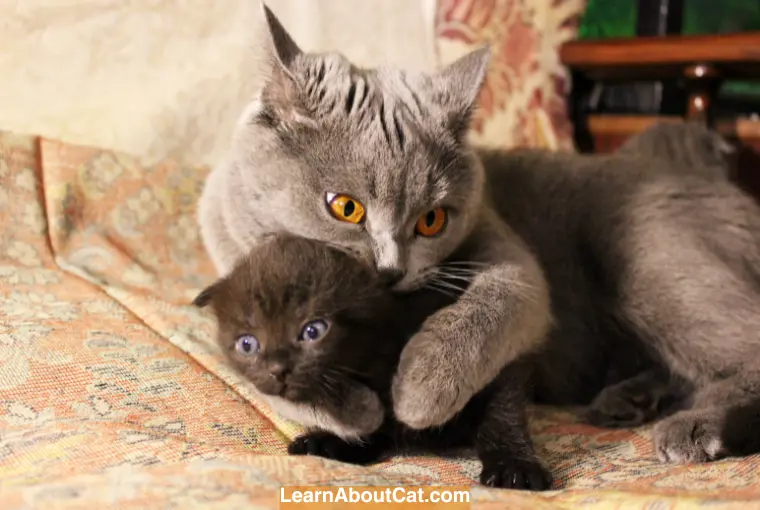
- Carrying: A mother cat frequently carries her kittens to a different territory in her mouth. Using a technique called “scruffing,” she would grab the kitten from the collar. This makes the kitten wobbly and helps to handle it.
- Dragging: A mama cat may occasionally use her jaws or paws to drag her babies to a new area. The kittens may experience stress from this procedure, therefore it’s recommended that they avoid it. With adolescent kittens, we observed this practice.
- Compelling them to act: Your pet may carefully nudge her kittens using her claw or softly prod them using her nose to encourage them to walk. To convince her kittens to come to a different area, she might even scream or purr. The kittens benefit less from this strategy, and as they try to imitate their mom, they may grow more self-reliant.
What are the Signs That a Cat May Move Her Kittens?
Below are a few indications that your cat could be getting ready to transport her kittens:
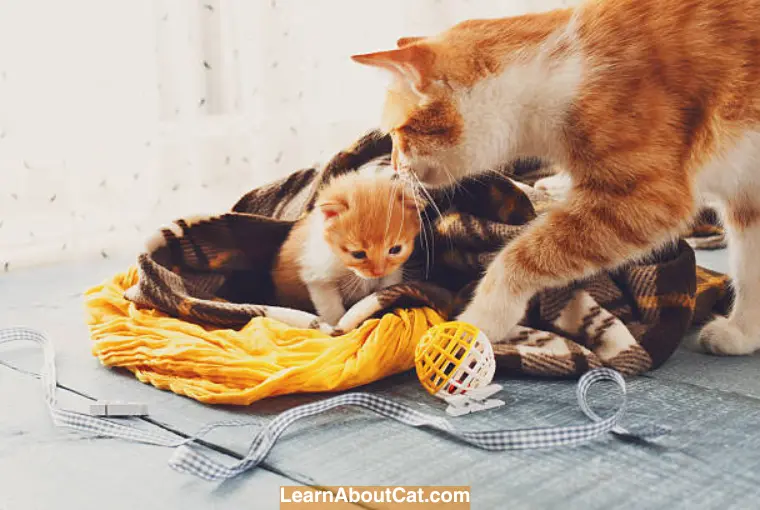
- Agitation: Agitation is among the initial clues that your cat is getting prepared for moving her kittens. She might hop, make a scream, or appear agitated. Also, you might see her overgrooming her kittens or shifting them about in their present nesting location.
- Hiding: A mama cat may begin searching for a new, secure spot as she gets ready to leave her kittens. She might move farther away from her present breeding location or disappear for a longer duration, as you may have noticed.
- Collecting resources: Your cat can gather supplies to build a new home if she is getting ready to relocate her babies. Soft comforters, napkins, or even paper pieces or cloth could be used in place of this. These things can begin to disappear from your living area surroundings.
- Alterations in mealtime behavior: If your cat is getting ready for leaving her kittens, you might find differences in her food habits. As mom gets ready to shift her babies to a new area, she can begin providing food to them less regularly or get more possessive of them when it’s meal times.
If you’ve got a mama cat and her offspring living in your house, it’s crucial to be aware of these symptoms. You should offer the cat the room and assistance she requires to keep her litter secure and strong if you see her prepared for moving her kittens.
Should I Let My Cat Move Her Kittens?
Yes, you can allow your cat to transfer her young. Letting your cat relocate her babies is preferable to you moving them personally. Therefore, it is wise to keep an eye on where the mother places the kittens. In this manner, you can continue to sometimes look at them.
Never stop a mother cat from transferring her litter knows, this is typically a lost effort. A mother cat will only transfer her kittens if she’s got reasonable grounds for doing so. Trying to prevent her is simply going to result in frustration and even anger.
Frequently Asked Questions
Cat moving kittens 2 weeks old, why?
Your cat might be shifting her 2-week-old kittens because she may be looking for a place where they can rest or feed that is more pleasant. Another explanation is that she thinks she’s feeling squeezed in and wants more room. She might also be searching for a location where she believes her babies will be protected from attackers or other pets.
Why does my cat keep bringing me her kittens?
Your cat leaves kittens with you because she needs a break from her litter. She might have wanted a snooze or to go hunting. She could also have required a break from nursing. However, it might be possible that she’s ill. In that case, you must take your cat to the vet.
Why does my cat separate her kittens?
Most litters include a brat, who is the tiniest and poorest of the family’s members. This brat might be removed from nursing and training, as it is too tiring for the mother cat to look after a weak kitten.
My cat moved her kittens and can’t find them
Constantly nursing kittens, along with sleep deprivation may leave a mother irritable and she may forget where she put her kittens. If your cat is unable to locate her babies, she will become agitated. Assist her in reuniting with the babies as soon as possible. Kittens will be more vulnerable if they are left alone for a long time.
Can A cat forget where she put her kittens?
A cat will merely shift its kittens if you touched them, particularly if you’re the owner of the cat. However, a cat may shift her kittens if you worry about them excessively. This is because cats prefer to raise their kittens in peaceful and quiet conditions. A mother cat also transfers her offspring if she considers a human to be a risk or challenge to them.
Will cats move their kittens if you touch them?
A cat is quite rare to forget where she placed her young. Although if she can’t see them, she could sniff them thanks to their acute smelling sense. So, if a mother cat doesn’t come back to her kittens within a couple of hours, it is doubtful that she has forgotten where she’s placed them. Also, something may have happened that is keeping her from returning to them.
Do outdoor cats move their kittens more often than indoor cats?
Outdoor cats will relocate their kittens more frequently than indoor cats because they’re prone to the outside environment and animals. So, whenever they believe the nest is undesirable for their kittens, they’ll relocate it to protect them, to provide them with a clean or cozy place, or for a variety of other causes. Thus, mother cats transfer their kittens vary according to their situation.
Conclusion
Mother cats move their kittens to different places for different reasons. They do this to keep their kittens safe from dangers or if they feel uncomfortable in their current place so she moves them to a safer and more protected place. Sometimes, the mother cat also needs a break from looking after too many kittens, so she moves them to a better place. Yet, there are situations when the mom decides not to take care of a kitten and abandons it outside the nest.
In these circumstances, you must keep a tight eye on the issue. The mother will remove a kitten from other babies if it’s very little or unwell to survive so that the stronger kittens can receive more care.
Your cat always desires the finest for her young, similar to any new mom. You may not stop your cat if she is keen on moving her nest! If she decides that something is endangering her kittens, she could get upset if she can’t get rid of it. You may have to agree with her decision if you’ve tested all options to stop her.
Moreover, assist her by giving her fresh bedding, relocating her food and drinking bowls, and even transferring a few of her babies to their new nest if it’s safe.
Related Posts:
- Can Cats Find Their Litter Box If You Move It?
- Kitten Sleeping All Day After Vaccination – Is It Normal?
- Why Is My Nursing Cat Always Hungry? [Answered]
- Best Flea Treatment for Kittens Under 12 Weeks
- How Long Should Kittens Eat Kitten Food?
- How Do Cats Know Where the Litter Box Is?
- How to Bathe a Cat or Kitten? -[Step By Step Guide]
Who is Isabella?
My name is Isabella, and I am a dedicated and knowledgeable cat enthusiast. With years of experience caring for cats and a deep love for felines, I made a mission to help other cat lovers navigate the challenges of cat ownership.

